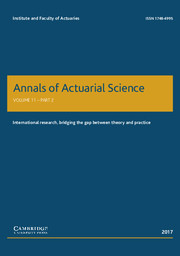No CrossRef data available.
Article contents
Distill knowledge of additive tree models into generalized linear models: a new learning approach for non-smooth generalized additive models
Published online by Cambridge University Press: 14 November 2024
Abstract
Generalized additive models (GAMs) are a leading model class for interpretable machine learning. GAMs were originally defined with smooth shape functions of the predictor variables and trained using smoothing splines. Recently, tree-based GAMs where shape functions are gradient-boosted ensembles of bagged trees were proposed, leaving the door open for the estimation of a broader class of shape functions (e.g. Explainable Boosting Machine (EBM)). In this paper, we introduce a competing three-step GAM learning approach where we combine (i) the knowledge of the way to split the covariates space brought by an additive tree model (ATM), (ii) an ensemble of predictive linear scores derived from generalized linear models (GLMs) using a binning strategy based on the ATM, and (iii) a final GLM to have a prediction model that ensures auto-calibration. Numerical experiments illustrate the competitive performances of our approach on several datasets compared to GAM with splines, EBM, or GLM with binarsity penalization. A case study in trade credit insurance is also provided.
Keywords
- Type
- Original Research Paper
- Information
- Copyright
- © The Author(s), 2024. Published by Cambridge University Press on behalf of Institute and Faculty of Actuaries


